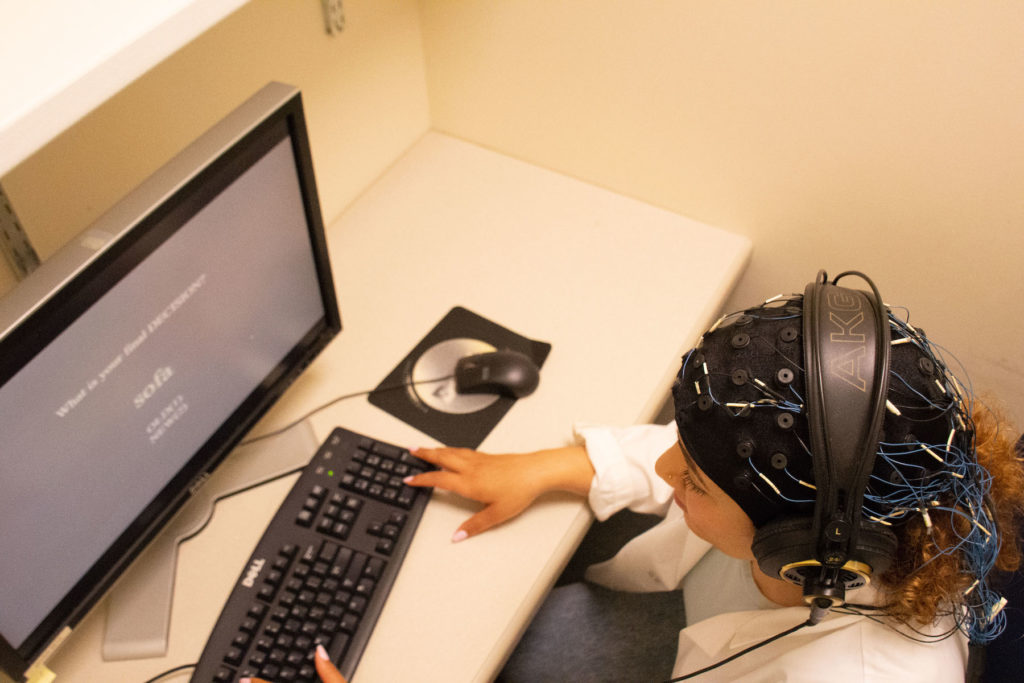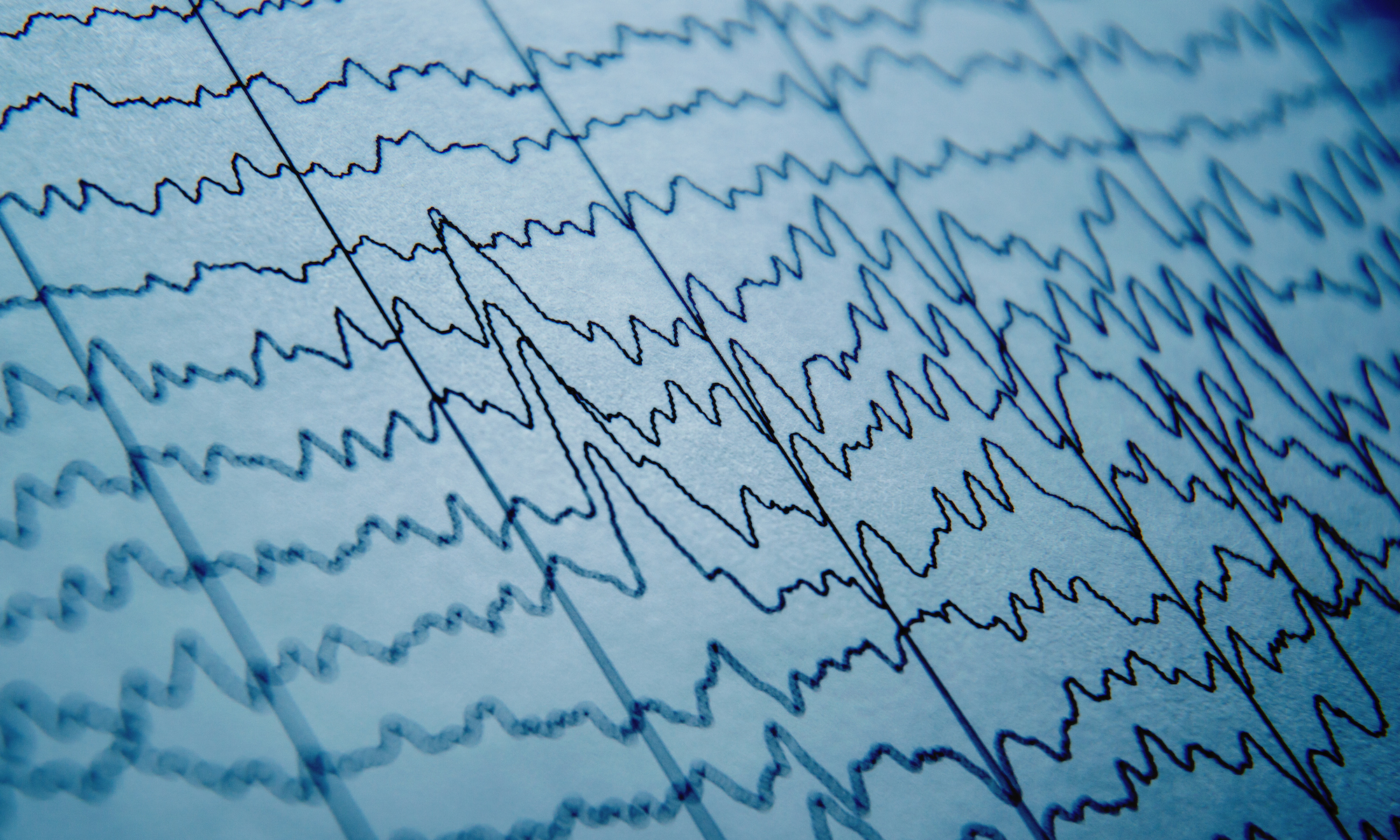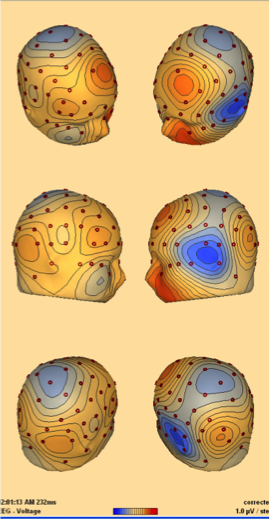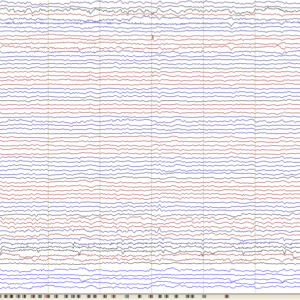Electroencephalography (EEG)

Our brain can be attributed in some way to everything we do, from remembering, to planning for our future, to playing a sport, to even breathing. The neural activity associated with these psychological processes and many others is in part electrical. Electroencephalography or EEG is a non-invasive technique that provides continuous recording of the brain’s electrical processes and allows us to associate these changes with a particular events, like recognizing a face or remembering a word. EEG is a very safe method that has been used for many decades and does not involve X-rays, radiation or injections. The director of the lab has been recording EEG safely for over 15 years.
In order to measure electrical activity in the brain, people participating in our EEG experiments wear a cap made out of material very similar to a swimming cap, but that has buttons all around it with wires coming out of them like in the picture above. The buttons are actually rubber cups that have metal disks inside. The technical name for these buttons is “electrodes” because they measure your brain’s electrical activity. The electrodes are specially designed so that they can sit just on top of the scalp, but still measure the changes in electrical activity inside your brain.
That electrical activity is recorded as “brainwaves” which show up on our computers as the “squiggles” you see to the right. We can also use the computer to “map” these electrical changes across the scalp in color (above, left). Students who participate in our studies not only get to learn more about how EEG works, but also get to see their own brain activity in action!
For more information about the basics of EEG: http://en.wikipedia.org/wiki/Electroencephalography


